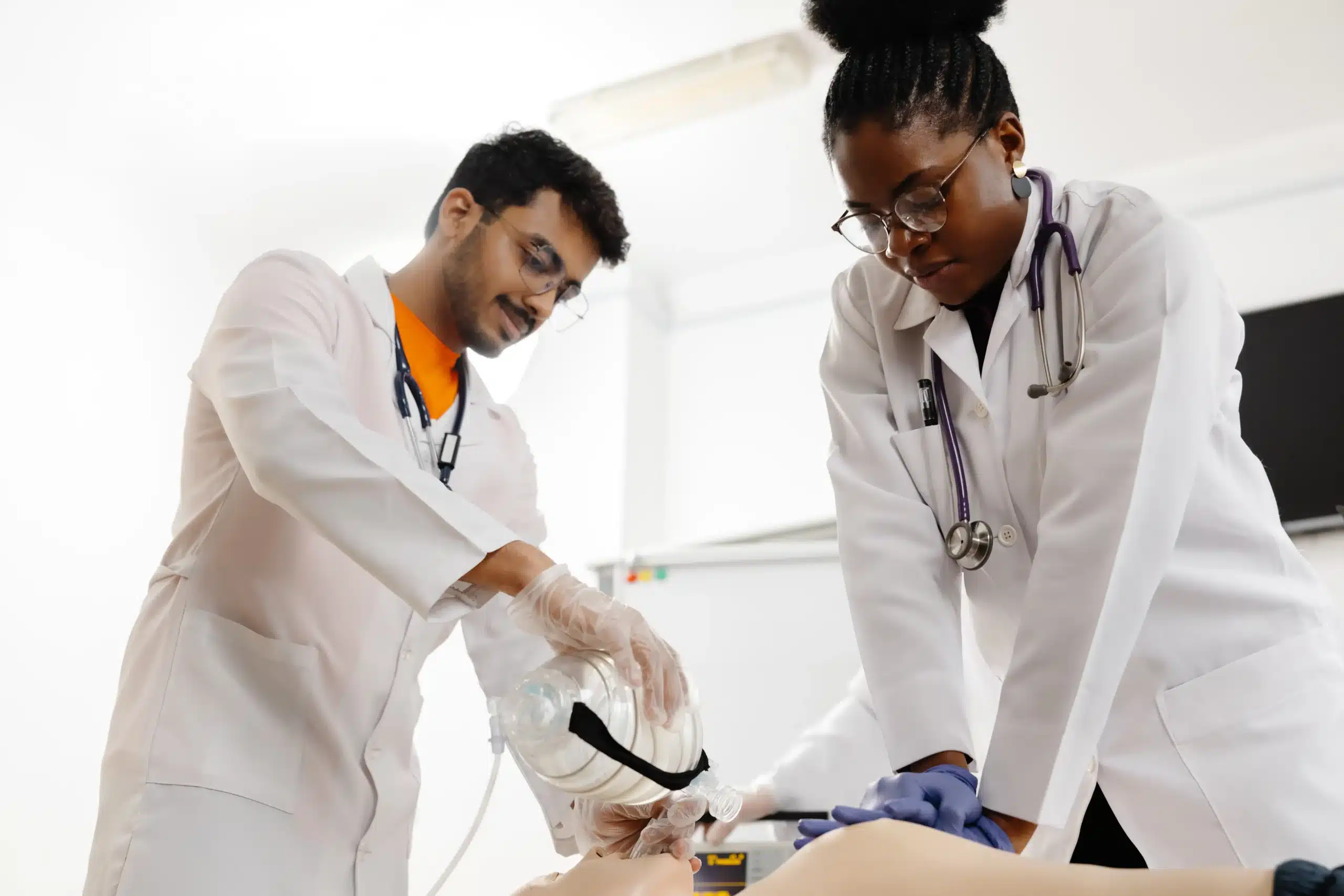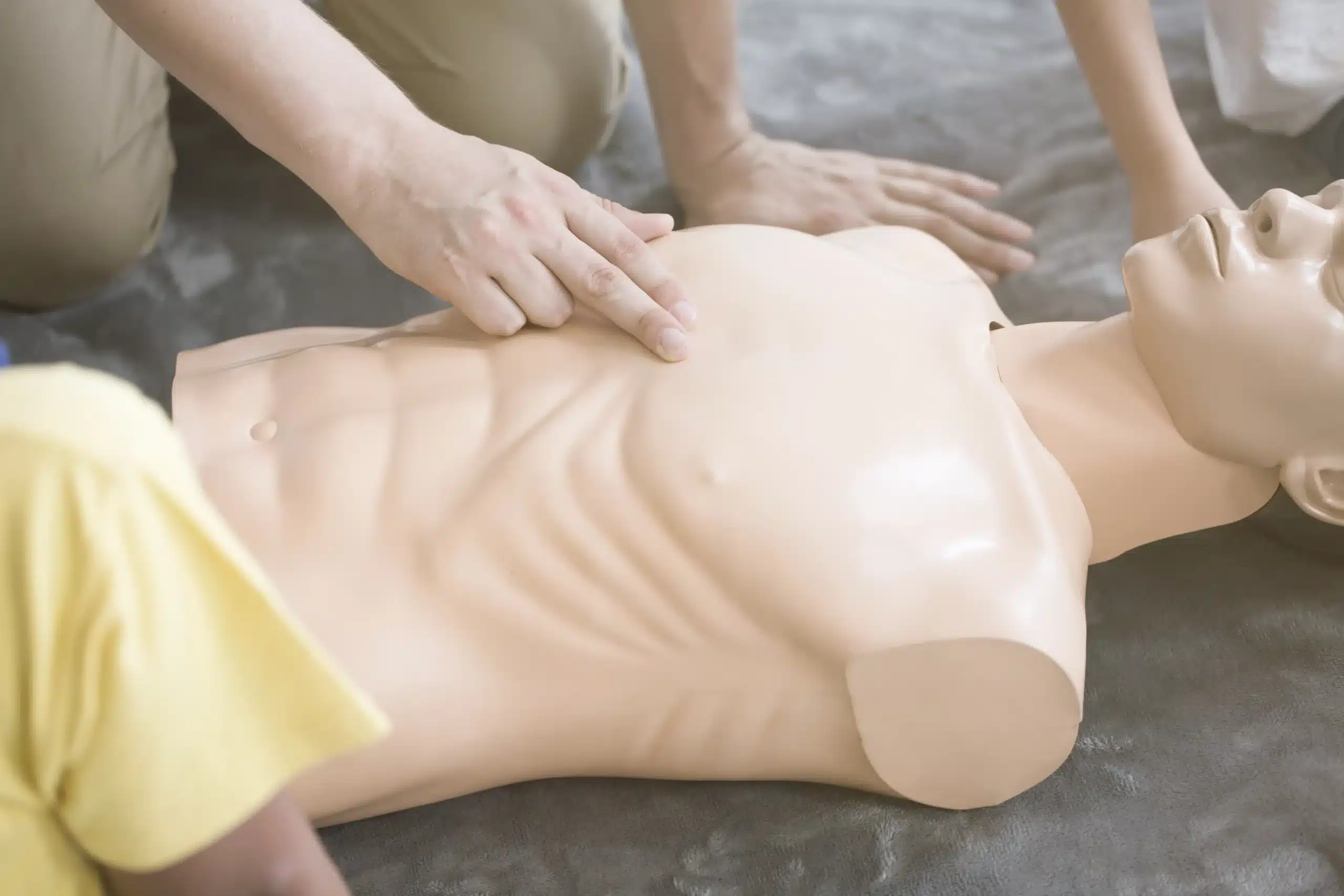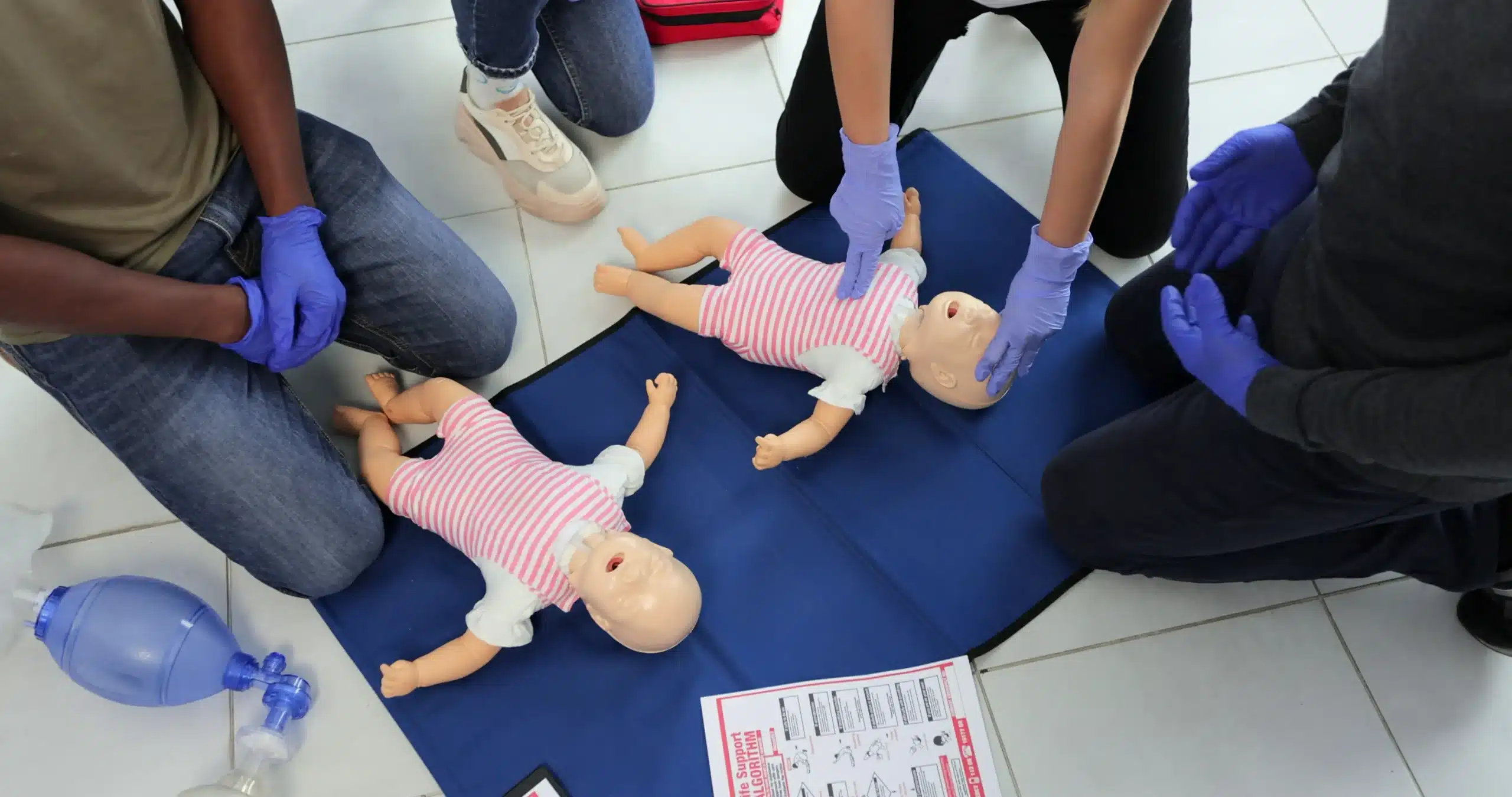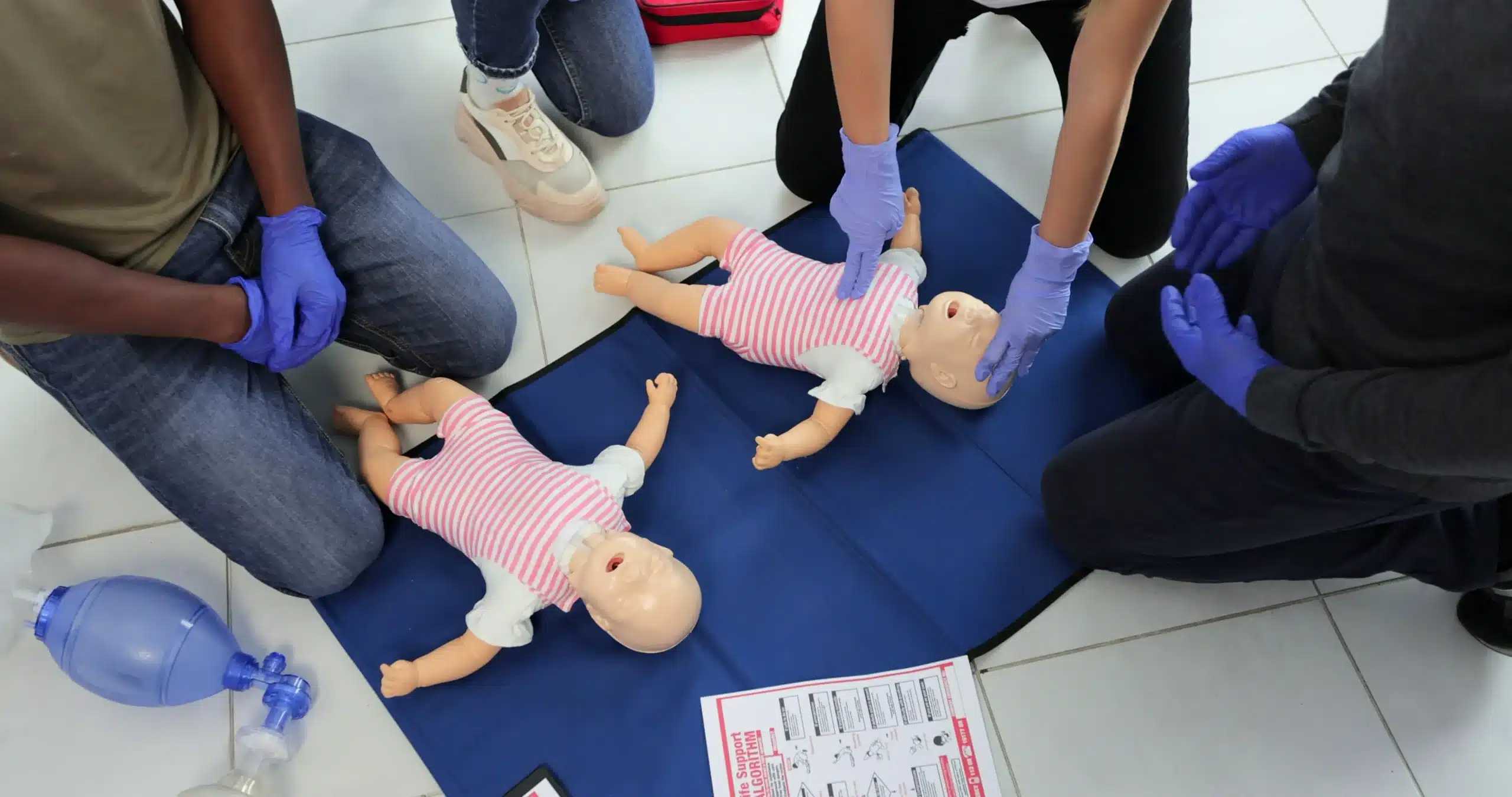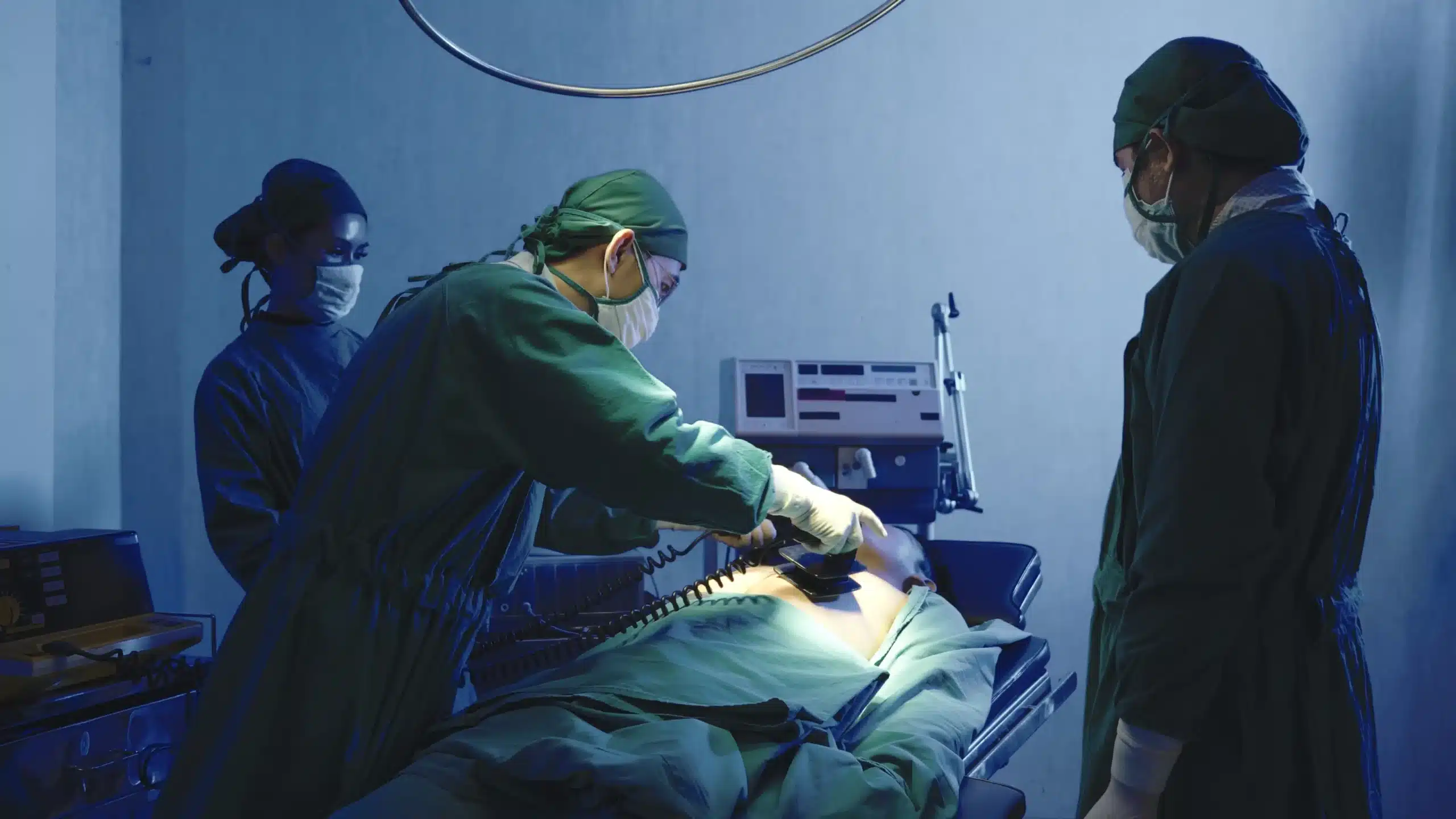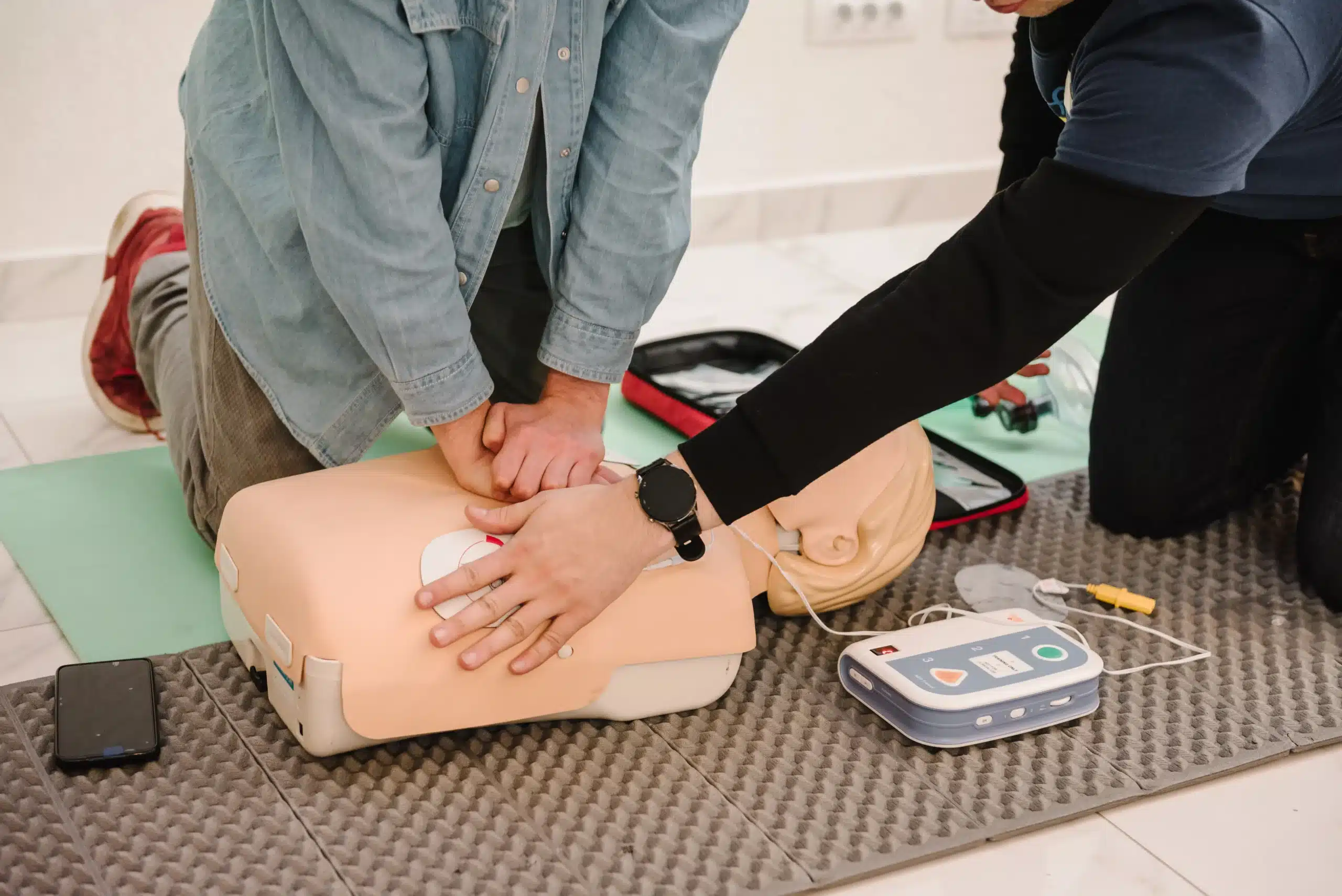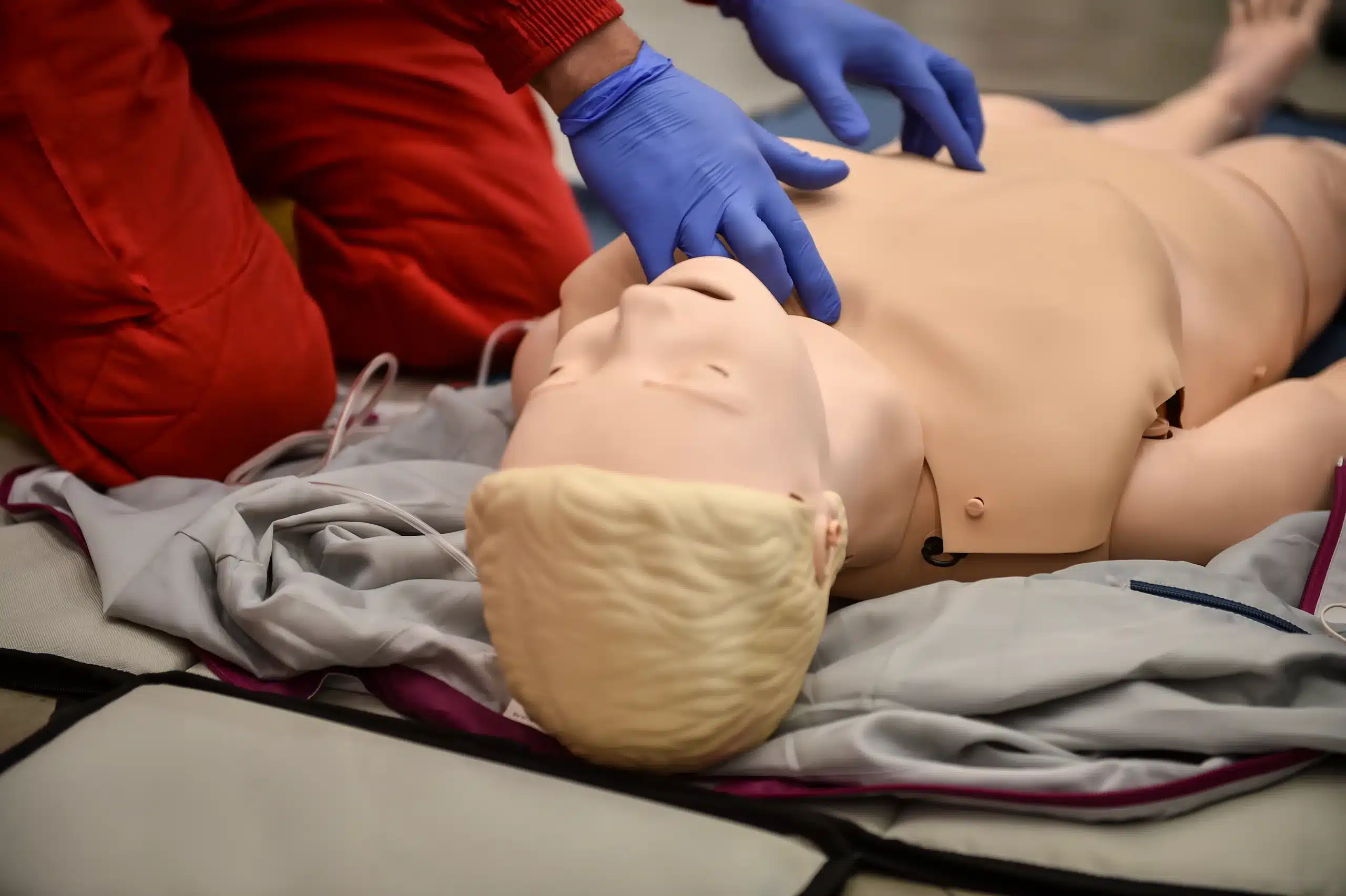Think about your colleagues, the people you spend your workday with. Would you know what to do if one of them experienced a sudden cardiac arrest? CPR certification empowers you to act quickly and confidently in such situations, potentially saving a life. This post explores how CPR certification can make you a workplace hero, transforming you into a valuable asset during emergencies. We’ll discuss the importance of workplace emergency preparedness, the impact of CPR on survival rates, and the simple steps you can take to get certified. Become a source of strength and security in your workplace—learn how CPR can make you a true hero.
Key Takeaways
- CPR certification empowers you to act: Equipping yourself with these life-saving skills allows you to confidently respond to emergencies and potentially make a real difference.
- Preparedness fosters a safer workplace: CPR-trained employees contribute to a more secure environment for everyone, demonstrating a commitment to safety and well-being.
- Maintaining CPR skills is an ongoing commitment: Regular refresher courses and staying informed about the latest guidelines ensure you’re always prepared and confident in your abilities.
What is CPR Certification & Why Does it Matter at Work?
CPR certification equips you with the skills to respond effectively during cardiac emergencies. While you’re not legally required to have certification to perform CPR, a structured CPR course ensures you’re well-prepared to administer this life-saving technique correctly. This training empowers you to act confidently and potentially save a life.
What is CPR Certification?
CPR certification involves completing a recognized training program, like those offered by the American Heart Association, that covers essential techniques and best practices for cardiopulmonary resuscitation. These programs often include instruction on using an automated external defibrillator (AED). Certification demonstrates your commitment to workplace safety and your ability to handle emergencies. It’s a valuable asset, especially in fields like healthcare, education, and childcare.
What Will You Learn in CPR Training?
CPR training provides you with the knowledge and skills to respond to various emergency situations. You’ll learn how to assess a victim’s condition, perform chest compressions and rescue breaths, and use an AED safely. The training covers techniques for adults, children, and infants, preparing you for diverse scenarios. You’ll also gain an understanding of basic first aid principles, further equipping you to handle other medical emergencies. Learn more about our comprehensive CPR and First Aid Certification Courses.
Why is Workplace Emergency Preparedness Important?
Prioritizing CPR training in the workplace creates a safer environment for everyone. It empowers employees to respond effectively during emergencies, potentially saving lives before professional help arrives. Having trained personnel on-site can significantly reduce liability and demonstrates a commitment to exceeding occupational safety standards. A prepared workplace fosters a culture of safety and responsibility, boosting employee morale and confidence. For businesses looking to train their teams, we offer group CPR discounts.
Cardiac Emergencies at Work: Facing the Facts
We often think emergencies happen “somewhere else,” but the reality is they can occur anytime, anywhere—including at work. Understanding the facts about cardiac emergencies can motivate us to be prepared and potentially save a life.
How Often Do Cardiac Emergencies Happen at Work?
It’s a chilling statistic: about 10,000 cardiac arrests happen in US workplaces every year. This number underscores the importance of having trained individuals on-site who can respond quickly and effectively. Think about your own workplace. Are you and your colleagues prepared? Having readily available CPR-trained personnel can make all the difference.
How Does CPR Affect Survival Rates?
CPR can quite literally double or even triple a person’s chance of surviving sudden cardiac arrest. Learning CPR equips you with the skills to provide immediate assistance, keeping the blood flowing to vital organs until professional medical help arrives. Those first few minutes are absolutely critical. Find a CPR class near you to learn these lifesaving skills.
Common Workplace Emergency Myths
Several myths surrounding CPR can prevent people from taking action. Let’s debunk a few:
- Myth: You must be certified to perform CPR. This is false. While CPR certification provides valuable training and best practices, any attempt at CPR is better than none. Don’t let the absence of formal certification stop you from helping someone in need. Learn more about the importance of CPR training.
- Myth: CPR always saves lives. Sadly, this isn’t true. CPR significantly increases the odds of survival, but it doesn’t guarantee a positive outcome. However, even if CPR doesn’t restart the heart, it can still maintain vital blood flow to the brain and other organs, increasing the chances of successful resuscitation by first responders. Understanding these common misconceptions about CPR empowers us to act confidently and effectively in emergencies.
Be a Workplace Hero: Get CPR Certified
CPR certification is more than just a checkbox on a training list; it’s an investment in yourself, your colleagues, and your workplace. Knowing you can respond effectively in a crisis brings confidence and preparedness that strengthens the entire team.
Improve Your Workplace Safety Culture
Making CPR training a workplace priority saves lives and empowers employees, according to Occupational Health & Safety. When a company invests in CPR training, it demonstrates a commitment to employee well-being and creates a more positive safety culture. This proactive approach, embedding CPR training into workplace safety programs, can significantly reduce workplace incidents and create a more supportive and secure environment.
Build Confidence & Enhance Your Professional Reputation
CPR and first aid training give you the skills to manage emergencies with confidence, as explained by My CPR Certification Online. This confidence translates into quicker, more effective responses during critical moments. CPR certification also enhances your professional reputation, showing you’re prepared to handle unexpected situations and take initiative—valuable qualities in any employee. When paired with proper workplace policies, CPR training can reduce liability by meeting or exceeding occupational safety standards.
Advance Your Career
CPR certification can be a significant asset to your career, especially in fields like healthcare, education, and childcare. Even in workplaces where risks seem minimal, training employees in CPR is a strategic step toward fostering safety and building a responsible work culture. It demonstrates a commitment to safety and preparedness, qualities many employers value. Plus, CPR training can boost morale and alleviate stress related to workplace safety concerns, notes My CPR Certification Online. Knowing you can handle an emergency makes you a more valuable and confident team member.
Learn to Save a Life: From Training to Action
CPR certification empowers you to take action during emergencies. It goes beyond theory, equipping you with practical skills to make a real difference. Let’s explore how this training translates into action.
Recognize the Signs of a Cardiac Emergency
CPR and first aid training teach you to quickly assess a situation and recognize the signs of a cardiac emergency. You’ll learn to identify symptoms like sudden collapse, unresponsiveness, and abnormal breathing. This rapid assessment is crucial, as every minute without CPR decreases the chances of survival. Immediate action can significantly impact outcomes, as emphasized by the American Heart Association.
Respond Effectively to Workplace Incidents
CPR and first aid training provides employees with the knowledge and skills to manage emergencies with confidence. This training equips employees with life-saving techniques and improves morale, reducing stress related to workplace safety. Being prepared to respond effectively can transform a chaotic situation into a controlled one, where your actions can directly contribute to positive outcomes. CPR training creates a safer work environment. Making CPR training a workplace priority saves lives, empowers employees and strengthens workplace safety culture.
How to Use an AED
Automated External Defibrillators (AEDs) are life-saving devices found in many workplaces. Your CPR certification will include training on how to use an AED safely and effectively. You’ll learn to assess the situation, apply the AED pads, and follow the device’s prompts. This hands-on training ensures you’re prepared to use an AED on adults, children, and infants, maximizing the chances of a successful outcome during a cardiac emergency. Workplace CPR and first aid training often includes AED instruction.
Get CPR Certified: Your First Steps & Inspiring Others
Knowing the importance of CPR is one thing, taking action is another. This section helps you understand how to get certified and inspire a culture of preparedness in your workplace. Let’s empower ourselves and each other to make a difference.
Choose the Right CPR Certification Course
Finding the right CPR certification course is the first step. Look for a program that covers adult, child, and infant CPR and AED training. A comprehensive course will also include first aid training, equipping you to handle a wider range of emergencies. Safety Training Seminars offers American Heart Association courses that meet these criteria, ensuring you receive high-quality, comprehensive training. These skills prepare you to assist anyone, regardless of age, and understanding AED usage is crucial for effective emergency response. For more information on workplace preparedness, check out these resources from First Response Training International.
Encourage Your Coworkers to Get Certified
Once you’re certified, consider how you can champion CPR training in your workplace. Talk to your colleagues about the importance of CPR and encourage them to get certified too. A team trained in CPR creates a safer and more prepared work environment for everyone. When more people are equipped to respond to emergencies, it strengthens the overall workplace safety culture and can even save lives. Consider suggesting a group CPR class to your employer—it’s a great way to build camaraderie and potentially secure a discount. For further insights into the benefits of workplace CPR training, explore resources available from US CPR Online and Occupational Health & Safety.
Maintain Your CPR Skills & Promote Ongoing Preparedness
CPR certification isn’t a one-time event. It’s essential to maintain your skills and stay up-to-date on the latest guidelines. Regular refresher courses can help you stay sharp and confident in your abilities. Consider becoming a CPR advocate in your workplace, promoting ongoing preparedness and encouraging regular recertification. This commitment not only reinforces your skills but also sets a positive example for your colleagues. Remember, consistent training, combined with clear workplace emergency policies, can significantly improve outcomes during emergencies. The American Red Cross offers valuable information and training opportunities to help you stay prepared.
Related Articles
- How CPR Certification Prepares You for Emergencies – Alameda CPR Classes
- Why Workplace CPR and First-Aid Training is Important
- Top 10 Reasons to Get CPR Certified – Alameda CPR Classes
- CPR vs. BLS: Which Certification Do You Need? – Alameda CPR Classes
- Why CPR is Essential for Saving Lives
Frequently Asked Questions
If I’m not a healthcare professional, why should I get CPR certified? CPR certification is valuable for everyone, not just healthcare professionals. Emergencies can happen anywhere, and having trained individuals on-site, whether at work, home, or in public spaces, can significantly increase the chances of survival for someone experiencing cardiac arrest. You don’t need a medical background to learn CPR—it’s designed to be accessible to everyone.
What if I’m worried I won’t perform CPR correctly in a real emergency? It’s natural to feel apprehensive, but remember that any attempt at CPR is better than none. CPR training equips you with the knowledge and skills to respond effectively, and regular practice can build your confidence. Even if you’re unsure about performing every step perfectly, the most important thing is to start chest compressions and continue until professional help arrives.
How long does CPR certification last, and how do I renew it? CPR certifications typically last for two years. Renewal involves taking a refresher course to ensure your skills are up-to-date with the latest guidelines. Check with your certifying organization, such as the American Heart Association or the American Red Cross, for specific renewal requirements.
Are there online CPR certification courses available? Yes, several organizations offer online CPR certification courses. These courses can be a convenient way to learn the basics, but it’s important to choose a reputable provider that includes a hands-on skills assessment component. While online training is valuable, practicing the physical techniques with a qualified instructor is essential for developing proficiency.
How can I promote CPR training in my workplace? Start by talking to your colleagues and supervisors about the importance of CPR and first aid training. Share statistics about workplace emergencies and the positive impact of having trained personnel on-site. You could also suggest organizing a group CPR training session for your team, which can be more cost-effective and build camaraderie. Many training providers offer discounts for group bookings.


